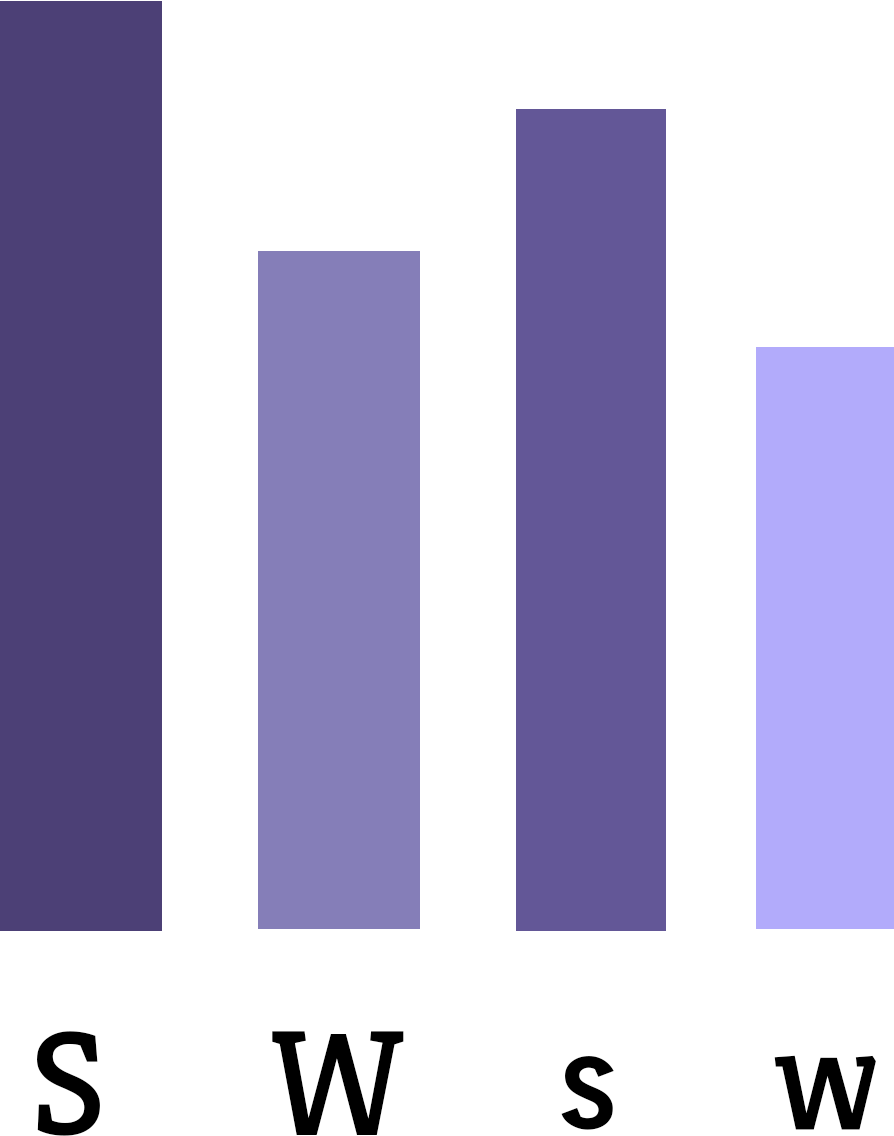Harmonic Stress: Why the Order of Chords Matters
Harmonic stress is the perceived importance of a chord, in relationship to the other chords in the progression.
This is a matter of metricRefers to the repeating lattice of beats (steady pulses expressed as BPM), and how they are divided into even units called measures.s. The position of the chord within a group of other chords will affect its perceived importance. In psychology, all lists create this effect. Test subjects who see a list of items will tend to remember the first one and the last one on the list, for instance.
Another way to think of harmonic stress is the strength of the chord. Understanding harmonic stress will help you to emphasize or de-emphasize chords in a progression.
Consider the following chord progression. Which of these chords will be the strongest?
| I | vi | ii | V |
| Cmaj | Amin | Dmin | Gmaj |
From a harmonic standpoint, clearly the I chord is the most important chord, though you could say the V chord has the strongest motion.
Another factor that affects the perceived strength of a chord is its placement in the progression.
Most songs are in common timeAs the name implies, the most common time signature, having four beats per measure. . This means one measureThe basic unit of beat grouping in music. Often the grouping is a measure of four beats, also called common time. or bar has four beats.
Just as four beats create a measure, four measures can create a bigger idea sometimes called a phrase; in traditional music, two such phrases might be called a period, and this might be a building block for songs or tunes.

“STRONG WEAK strong weak”
Within any group of four chords, no matter how fast they go by, some chords will have a sense of strength and others will be relatively weak. This is due to the human tendency to try to organize the chords into metrically equal groups. The composer can play with this tendency, but the most common grouping seems to be four. Consider the four chords above: if repeated, they would take on this harmonic stress:
The first chord is the strongest; it leads the others. The impact of the next is weak by comparison. The third chord, being the first in another group of two, is moderately strong. The last one is weakest of all—now we anticipate the beginning of another four.
The “strong” or “weak” stress has nothing to do with musical performance or composition, necessarily; it’s a matter of perception. Listeners will hear these strengths and weaknesses subconsciously. You can place chords you wish to emphasize on a stronger beat to increase their impact.
 As the creator of Hub Guitar, Grey has compiled hundreds of guitar lessons, written several books, and filmed hundreds of video lessons. He teaches private lessons in his Boston studio, as well as via video chat through TakeLessons.
As the creator of Hub Guitar, Grey has compiled hundreds of guitar lessons, written several books, and filmed hundreds of video lessons. He teaches private lessons in his Boston studio, as well as via video chat through TakeLessons.